Test Drive: 2014 Subaru XV Crosstrek Hybrid
Fuel economy, ruggedness and storage capacity in this affordable hybrid crossover

by Davis Adams
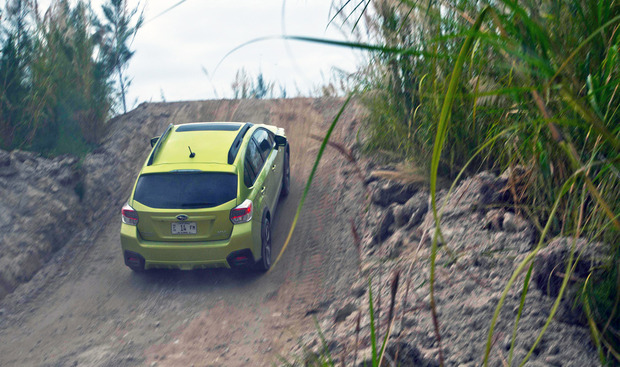
Subaru recently invited CH to Key West for a lesson in the brand’s values, as well as an introduction to their very first green car: the 2014 XV Crosstrek Hybrid. Of the car’s design, Michael McHale (of Subaru North America) says, “Our customers are three times more likely to cycle, three-and-a-half times more likely to hike and four times more likely to own a pet. And, they’re dirty. They’re muddy. They like to do outside stuff.” McHale is pointing to the open hatch on one of the company’s wagons; explaining why it’s important to have a wide aperture in the loading bay. “Our cars are designed with three giant structural hoops, which not only make the cars safer, but it also means you can stick a kayak back there.” Just an hour later, at the kayak slip on the water’s edge, McHale was proven right: all kinds of equipment can fit through that hatch.
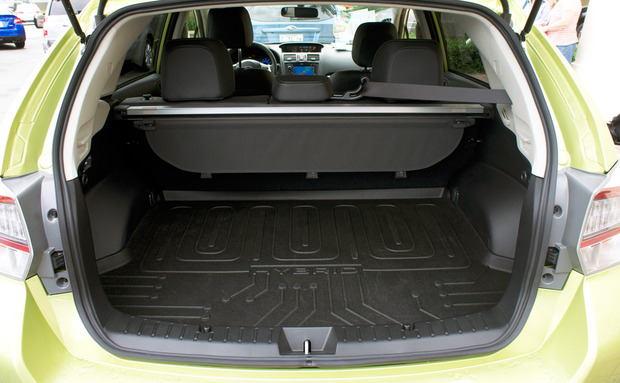
While time was spent on waverunners, paddleboards and kayaks, the main event was an off-roading course that displayed the vehicle’s ability to handle nearly any terrain; from steep inclines to loose gravel roads and broken paths. Subaru’s aim with the 2014 XV Crosstrek Hybrid is clearly to build a car that can take adventurers anywhere they want to go.
The XV Crosstrek (which debuted for the 2013 model year) shares the same basic bones as the modern Impreza wagon—including the symmetrical all-wheel-drive system—but with more ground clearance, a larger radiator and an amended array of exterior colors. In practice, the Crosstrek fills the void that was once occupied by the old Outback Sport Wagon, a compact hatch that eventually grew into the current mid-size Outback. For 2014, Subaru has addressed one of its owners’ few, but primary concerns: fuel economy.

The styling cues unique to the Hybrid are nuanced at best. For those who want to flaunt their improved environmental footprint, Subaru offers a hybrid-exclusive color called “Plasma Green.” Otherwise, you’ll find a new set of wheels (intended to decrease aerodynamic drag), clear tail lamps and hybrid badging on the side and rear panels. Inside, the gauge cluster includes blue rings, and there’s a push-button start and a power meter that displays how energy is used along the drive. Cloth is standard, but options like leather and sunroof come with the upgraded Touring model.
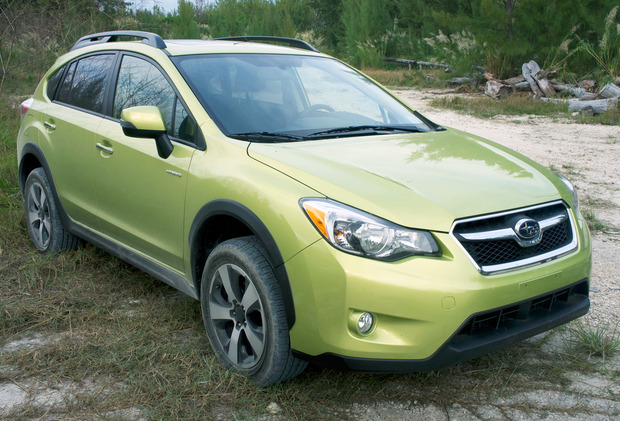
Nuanced style isn’t a bad thing. Rather than offering a traditional, egg-shaped hybrid that puts fuel economy above all else, the engineers have built a real Subaru, first and foremost. What the Crosstrek loses in aerodynamics, its gains in adventure-ready capability and storage capacity. The hybrid system’s battery takes the place of the spare tire—it includes Fix-a-Flat and a compressor instead—so no compromise is made in terms of cargo capacity. And, Subaru prides itself on the three-ring architecture of its vehicles, leaving the rear opening wide and unobstructed for your bikes, dogs or surfboards, while providing structural strength able to handle four times the XV’s weight in case of a rollover accident.
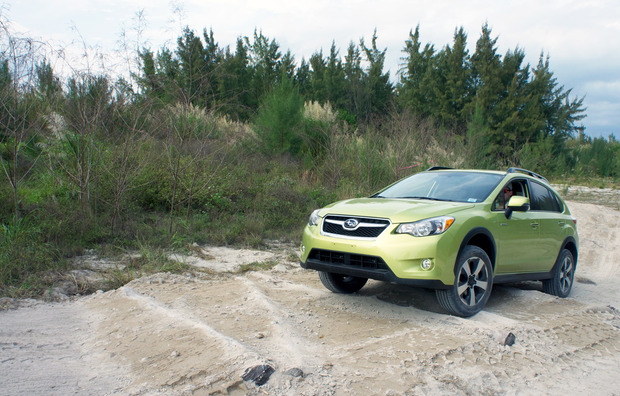
Under the hood, the Crosstrek Hybrid pairs the 148-horsepower, 2.0-liter boxer four-cylinder with a 16-hp electric motor, producing a total of 160 peak ponies. That hybrid system is mated to a continuously variable transmission (CVT) and standard all-wheel drive. The XV uses a mild hybrid system to save fuel, primarily in the city, and it can run in full-electric mode at stops, while the motor is used to aid the gasoline engine while you’re traveling down the road. The result is an EPA rating of 29-mpg city/33-mpg highway, which is a 6-mpg improvement in city driving over the traditional XV Crosstrek.
As hybrids go, it’s not the most impressive—especially in comparison with Prius’ 50-mpg rating. However, the typical Subaru driver probably needs a car that can go places that a Prius simply can’t; making the XV Crosstrek Hybrid a more efficient choice amongst Subarus and a more rugged choice amongst other compact green cars.
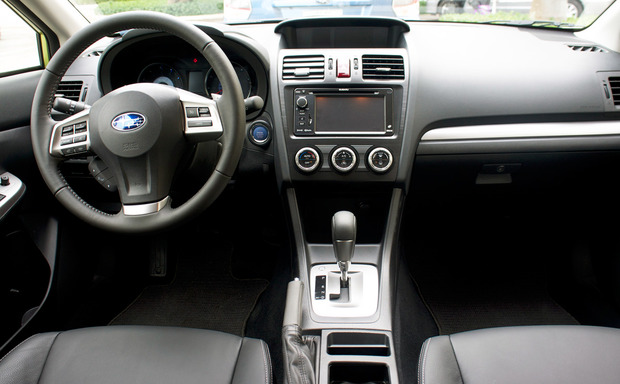
On the road, the XV doesn’t feel particularly quick, but it does offer a quiet, drama-free ride. Despite its ground clearance that rivals even the Jeep Grand Cherokee, the Subaru’s suspension never creates too much body-roll, even winding around turns. Sure, it may be tuned softly for off-roading adventures, but it’s never too wobbly. The materials inside feel well-constructed for an economy crossover and the climate control and Bluetooth are both easy to use. If there’s a downside here, it’s that the infotainment system in the Touring model is aesthetically pretty unappealing. Though, that can be replaced relatively easily at your local electronics store—one screen doesn’t change the driving quality of the entire car.
The 2014 Subaru Crosstrek Hybrid starts at just under $26,000 and commands a $3,000 premium over the traditional model. Subaru offers a long list of active lifestyle add-ons, like bike-racks and ski holsters. While that may seem expensive for an XV, it’s more affordable than a comparably equipped Outback, and significantly less expensive than the Toyota Highland Hybrid. That leaves the XV Crosstrek Hybrid almost alone in the market—or at least first to it. And by the time other automakers develop affordable hybrid crossovers for the roads, Subaru will probably be exactly where they desire: out in the woods, filled with hiking boots, mountain bikes and a dog—or three.
Lead image courtesy of Subaru, all others by Davis Adams












